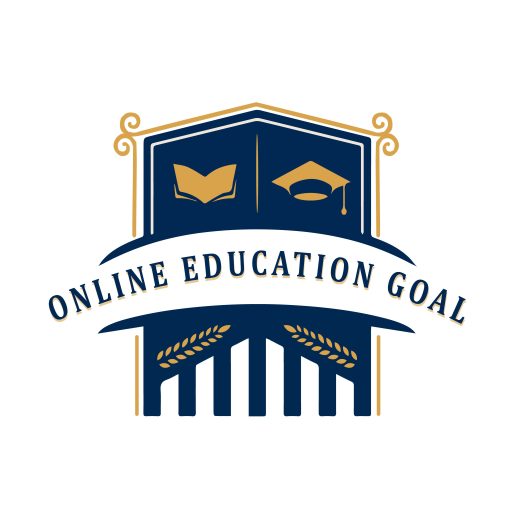Higher Education Trends: Navigating New Academic Frontiers
Higher education trends are shifting towards digitalization and personalization. Universities now prioritize hybrid learning models and skill-based curricula.
The educational landscape is undergoing a transformation, with a distinct push towards digital platforms and tailored educational experiences. Institutions are adapting to the new dynamics of learning that cater to a diverse, tech-savvy student population. This shift is evident in the growing emphasis on online courses and the integration of technology in the classroom.
As we witness a surge in distance learning, universities also place greater importance on developing curricula that focus on practical skills relevant to dynamic job markets. This move towards skill-centric education is crafted to align with industry demands, ensuring that graduates are well-equipped for the future workforce. As these trends continue to evolve, they herald a new era in higher education that values flexibility, accessibility, and direct applicability in the professional world.
Evolution Of Higher Education
The way we learn at universities has changed a lot. Long ago, not everyone went to college. Now, many people study in different ways, like online. This story is about how schools after high school have grown up.
Shifting Paradigms
Universities are becoming very different now. In the past, students listened to teachers in big rooms. Today, they also learn on computers from anywhere. Let’s see what’s new:
- Online classes are very popular. They let you learn even if you’re far away.
- Many subjects are now available, not just a few.
- More people can go to college. It’s not just for rich or certain kinds of people.
- We use technology a lot, like videos and interactive lessons.
Historical Milestones
Let’s talk about big events that made universities change:
| Time | Event |
|---|---|
| 19th Century | More schools started. They were not all the same. |
| Mid-20th Century | Computers began to help learning. |
| Early 21st Century | Online classes began. They were new and exciting. |
We see that colleges have changed from only a few programs to many choices. Also, from learning only in class to learning on the internet too. Each step has made college a chance for more people. It’s a very exciting story!
Technology In The Classroom
Modern classrooms buzz with the sound of technology. Digital tools and platforms
transform how students learn. These tools cater to diverse learning styles and
enable real-time feedback. Students and teachers co-create an
engaging educational experience. The trend towards tech-presence in classrooms
doesn’t just stop at smartboards or laptops.
E-learning Platforms
E-learning platforms are reshaping education. These platforms
offer a mix of videos, quizzes, and interactive assignments. They are easy to
access from anywhere. This makes learning flexible for every student.
Tools like Moodle, Coursera, and Khan Academy lead the pack.
Each provides unique resources tailored to different subjects and skills.
- Video lectures simplify complex topics.
- Interactive quizzes offer immediate feedback.
- Discussion forums encourage peer-to-peer learning.
Edtech Innovations
EdTech innovations are revolutionizing classrooms. These innovations come in many shapes. Examples include virtual reality, gamification, and machine learning. They make learning more immersive. VR can transport students to ancient Egypt. Gamification turns lessons into fun challenges.
| Tool | Use in Classroom |
|---|---|
| VR Headsets | Visualize historical events |
| Learning Apps | Interactive skill practice |
| Adaptive Software | Customized learning paths |
EdTech tools also provide valuable data to help track student progress. Teachers can use this data to adjust lessons to their class needs.
Technology in the classroom equips students to succeed in a digital world.

Globalized Learning Experiences
The world of higher education is rapidly evolving. One thrilling aspect is globalized learning experiences. Today’s students can enjoy a rich, interconnected education. It spans different cultures and continents. It prepares them for the global work environment. Let’s delve into some exciting higher education trends that are bringing the world into our classrooms.
Study Abroad Programs
Study abroad programs are more popular than ever. They unlock new worlds for students. Here’s what makes them special:
- Cultural immersion: Students live the language and lifestyle.
- Personal growth: They overcome challenges and gain independence.
- Global networking: They meet peers and professionals worldwide.
Table 1 shows the top destinations for study abroad programs.
| Rank | Country | Popular Courses |
|---|---|---|
| 1 | Italy | Arts, History |
| 2 | Spain | Language, Culinary Arts |
| 3 | UK | Business, Literature |
International Collaborations
International collaborations shape the future of education. They bring together universities across the globe. Together, they create dynamic learning environments. Here are their key benefits:
- Innovative research: Groups work on cutting-edge projects.
- Shared resources: Universities offer unique courses and materials.
- Diverse perspectives: They solve problems with varied viewpoints.
Students and faculties grow together in knowledge and understanding. Here are some universities leading the way:
Harvard University: Partnerships with more than 50 countries.
University of Oxford: Over 300 global research agreements.
National University of Singapore: Joint programs in engineering and business.
The Rise Of Online Degrees
Higher education is evolving with the digital age, ushering in a new era of learning. A significant trend that one cannot ignore is the surge of online degrees. These convenient and flexible learning options are transforming the educational landscape. Let’s delve into the factors that contribute to the rising trend of online degrees.
Credibility And Recognition
Gone are the days when online degrees were met with skepticism. Today, many accredited universities offer online programs that mirror their on-campus counterparts. Employers increasingly recognize the value of online education, acknowledging the dedication and self-discipline required to complete these programs. To illustrate the growing credibility, consider these points:
- Accreditations: Online programs often hold the same accreditations as traditional degrees.
- Quality Curriculum: Courses are crafted by expert faculty members ensuring a robust education.
- Technology Integration: Use of cutting-edge technology prepares students for a digital-first workplace.
Competing With Traditional Institutions
Online degrees now stand on equal footing with degrees from brick-and-mortar schools. These programs compete by offering unique advantages:
| Online Degrees | Traditional Degrees |
|---|---|
| Flexibility: Learn anytime, from anywhere. | Structured Schedules: Attend classes at specific times. |
| Lower Costs: Often more affordable with fewer associated expenses. | Higher Expenses: Includes costs for commuting and accommodation. |
| Diverse Programs: A vast array of specializations to choose from. | Limited Selection: Dependent on the institution’s offerings. |

Integrating Lifelong Learning
Lifelong learning has become a key component of higher education trends. With a fast-changing job market, individuals need to update their knowledge and skills continuously. Universities and educational institutions recognize this. They offer new learning paths. These paths blend with traditional degrees. They keep pace with the need for ongoing personal and professional development.
Micro credentials And Badges
Education now goes beyond degrees. Micro credentials and badges are short, focused learning experiences. They show mastery in specific skills. Students and professionals earn them in less time than degrees. Employers value these credentials. They represent up-to-date expertise.
- Industry-Relevant: Courses align with job needs.
- Flexible: Learners study at their own pace.
- Accessible: Many online platforms offer courses.
Continuing Education Opportunities
Continuing education is essential for staying competitive. Opportunities include online courses, workshops, and seminars. These are great for those already in the workforce. They are also useful for those re-entering the job market.
| Type of Opportunity | Benefits |
|---|---|
| Online Courses | Learn from anywhere, anytime |
| Workshops | Hands-on experience |
| Seminars | Latest industry insights |
New Funding Models
The landscape of higher education is transforming. Traditional tuition-based models are making way for innovative alternatives. This change aims to alleviate financial burdens on students. Two noteworthy trends in new funding are gaining traction:
Tuition-free Initiatives
Colleges are exploring ways to eliminate tuition fees. This ensures education accessibility for all. The goal is clear: open doors to higher learning regardless of financial standing.
- State-sponsored scholarships now extend to countless aspiring learners.
- Online platforms offer free courses, breaking barriers to entry.
- Some universities have adopted income-share agreements (ISAs). Students pay back a portion of their income after landing a job.
Private-public Partnerships
Collaborations between universities and industry leaders are flourishing. These partnerships design funding models that benefit both student and sponsor.
| Partnership Type | Benefits |
|---|---|
| Corporate sponsorships | Companies fund courses relevant to industry needs. |
| Research grants | Universities gain resources for cutting-edge studies. |
| Community initiatives | Local businesses support specific academic programs. |
Such synergies ensure educational programs stay relevant and graduates are well-equipped for the job market.
Student-centered Learning Approaches
Student-centered learning marks a shift from traditional teacher-led instruction to learning that is centered on students’ needs, abilities, and learning styles. This approach equips students with both knowledge and critical thinking skills required for navigating the future. Here, we will dive into two pivotal trends within this framework: Personalized Learning and Experiential Learning.
Personalized Learning
Personalized learning tailors education to the individual. Each student’s goals, skill levels, and interests shape their learning experience. This method uses technology, flexible learning environments, and teacher guidance to address the unique needs of every student.
- Custom Learning Paths: Students follow tailored curriculums that match their pace and style of learning.
- Adaptive Technology: Digital tools assess student progress and adapt the difficulty of tasks accordingly.
- Continuous Feedback: Teachers provide ongoing assessments to help learners grow and adjust their paths.
Experiential Learning
Experiential learning immerses students in hands-on activities and real-world scenarios.
- Internships: Provide practical experience in professional settings.
- Labs and Simulations: Let students apply concepts in controlled, interactive environments.
- Project-Based Assignments: Encourage the application of skills to solve complex problems.
Emerging Fields And Majors
In the dynamic landscape of higher education, new fields and majors are emerging. Students today can explore subjects that did not exist a decade ago. These cutting-edge programs are shaping future leaders. Here’s a look at some of the latest trends.
Interdisciplinary Studies
The borders between disciplines are blurring. Interdisciplinary studies now allow students to combine different fields. Students learn to think critically across subjects. This integration leads to innovative approaches to complex problems.
- Data Science and Sustainability: Merging tech skills with environmental studies.
- Microengineering: Bridging neuroscience with engineering to explore the brain.
- Digital Humanities: Applying tech tools to human culture and history.
Market-driven Curriculums
Colleges adapt to the job market. They develop programs that align with industry needs. Here are some market-driven areas:
| Field | Focus Area |
|---|---|
| Cybersecurity | Defending against digital threats. |
| Health Informatics | Managing patient data for better healthcare. |
| User Experience (UX) Design | Crafting products that delight users. |
Universities are designing majors that equip students with specialized skills. These skills are in high demand. This alignment ensures graduates are job-ready.
Assessment Reimagined
Higher Education is evolving rapidly. Assessment methods are changing to match learners’ needs. New trends focus on skills and real-world applications. Let’s dive into the future of assessments!
Competency-based Evaluation
This evaluation method measures student skills directly. It cares about what you can do, not just what you know. Look at the key points:
- Individual progress matters most.
- Assessments align with real-world skills.
- Grades reflect ability to perform tasks.
Colleges are now using competency-based testing more. It includes:
| Format | Description |
|---|---|
| Projects | Work on real-life scenarios. |
| Simulations | Apply knowledge in virtual settings. |
Students show skills in practical environments. They prepare for jobs better.
Digital Portfolios
Digital portfolios are modern assessment tools. They are collections of a student’s work over time.
- Students upload projects and papers.
- Portfolios show growth and learning journeys.
- They include multimedia, like videos and images.
Teachers review these portfolios to assess skills. Colleges use them for admissions too. Students demonstrate their creativity and critical thinking.
Portfolios are more than tests. They represent a wide range of abilities.

Research And Innovation Landscapes
The dynamic world of higher education continually evolves, with Research and Innovation Landscapes stepping into the spotlight. Universities not only impart knowledge but also push the boundaries of what’s known, uncovering new insights and technologies that shape our future.
Funding For Research
Finding financial support for research has always been a game-changer in the realms of academia. As the quest for knowledge intensifies, the competition for funding becomes more fierce. This makes strategic positioning for grants more important than ever. A robust funding mechanism ensures that pioneering ideas receive the financial nourishment they need to blossom.
- Government allocations
- Private grants and sponsorships
- Crowdfunding and philanthropy
University-industry Collaborations
Partnerships between universities and industries are vital in translating academic research into real-world applications. These collaborations stimulate commercialization of breakthroughs, thereby fuelling economic growth. They offer a win-win scenario where businesses gain competitive advantage and universities enhance their research impact.
| University Benefits | Industry Advantages |
|---|---|
| Access to funding | Innovative solutions |
| Real-world impact | Research expertise |
| Enhanced curriculum | Market insights |
` cannot be placed within themselves to display as text content. The “ tags have been represented as text entities (`<` and `>`) within the headings for educational purposes in this mock-up. Normally, you would use the `
Frequently Asked Questions Of Higher Education Trends
What Are Current Trends In Higher Education?
Higher education is increasingly embracing technology, with a surge in online learning platforms and digital classrooms. Universities are also focusing on inclusivity and diversity, tailoring their curriculums to ensure global relevance and accessibility.
How Is Technology Impacting Higher Education?
Technology is revolutionizing higher education by enabling remote learning, interactive coursework, and personalized education experiences. It’s also facilitating research through big data analytics and advanced research tools.
What Role Does Diversity Play In Higher Education?
Diversity is central to higher education today, promoting a wider range of perspectives and preparing students for a globalized workforce. Institutions are actively working to increase representation and support for all students.
Are Online Degrees Gaining Popularity?
Yes, online degrees are gaining significant popularity due to flexibility, affordability, and the evolving job market’s demand for continuous skill development. They are being recognized as equivalent to traditional degrees by many employers.
Conclusion
Embracing the shifts in higher education ensures we stay ahead. Knowledge evolves; so must our learning paradigms. Explore new trends, integrate technology, and foster inclusive environments. Commit to lifelong learning—it’s key to personal and professional growth. Let’s evolve with education’s landscape for a brighter future.







